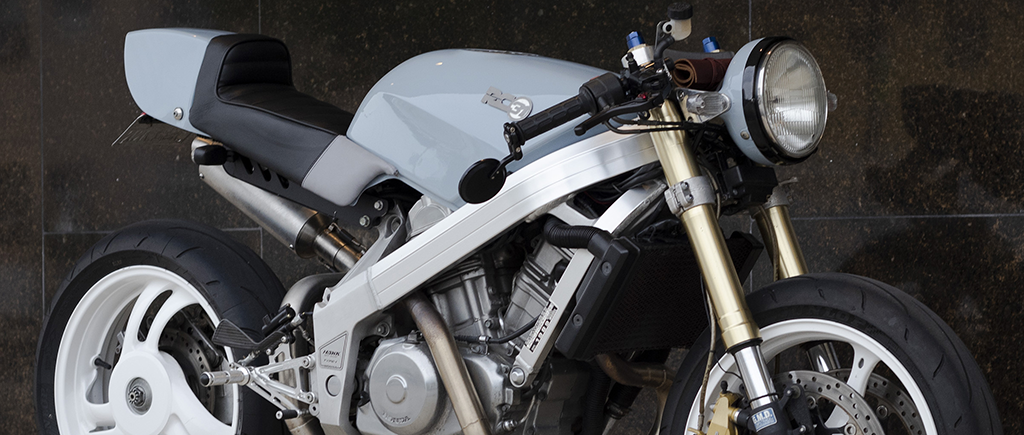Honda Hawk GT – RC 31
Customized 1989 Honda Hawk GT.
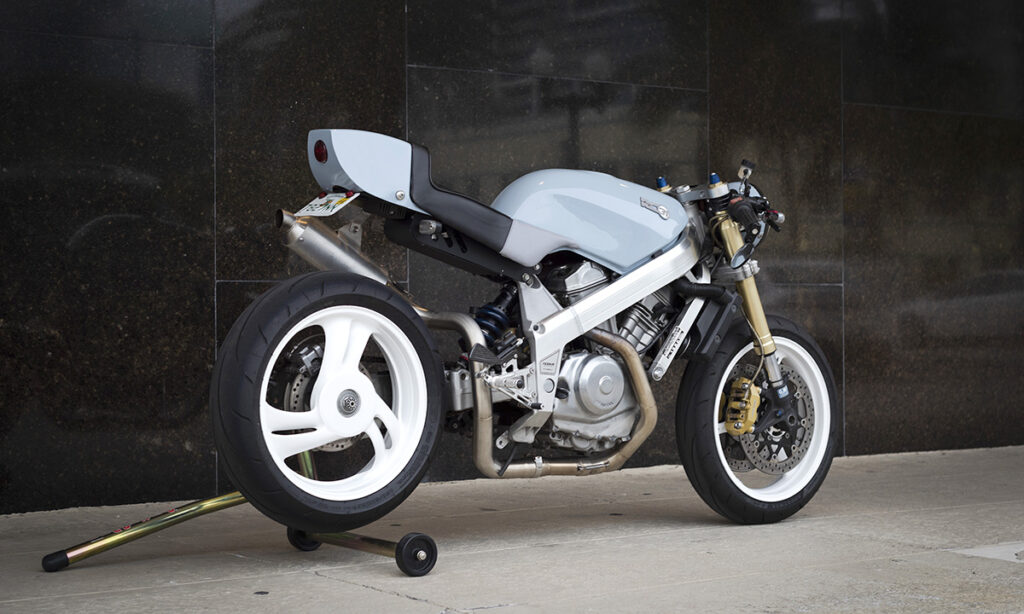
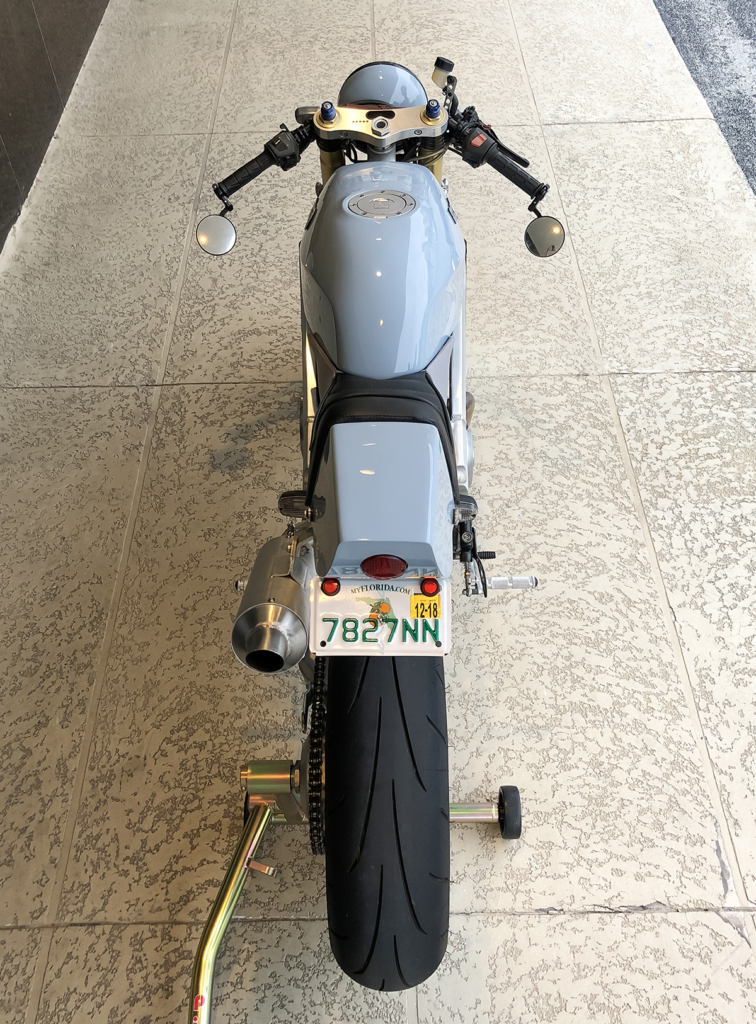
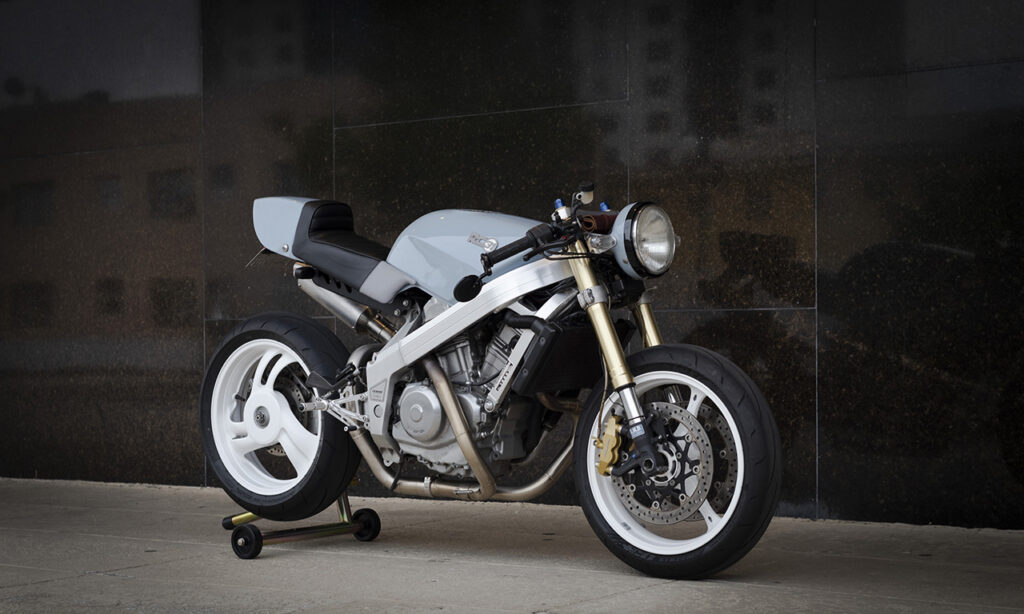
This project began with a bone stock 1989 Honda Hawk GT (NT 650), internally designated as model RC31 by Honda. The Hawk features a lightweight aluminum box frame housing the “Pro-Arm” single-side arm suspension, making it the second Honda model to adopt this suspension design after the RC30 VFR750R. The “Pro-Arm” was a collaborative effort between Elf Racing and Honda Racing Corporation.
Regarded as one of the earliest examples of modern naked bikes, the Hawk GT hit the market several years prior to the Ducati Monster. Sold exclusively in the U.S. from 1988 to 1991, it continued its production run in Europe until 1998 under the name Honda Bros, offering both 400 NC 25 and 650 options.
Powered by the same V-twin engine as the Honda XRV650 Africa Twin, it features a lighter and higher-spec version of the 750cc dual-sport motor developed by HRC for the Paris-Dakar rally. Performance upgrades include a stage 3 jet kit for the carbs, K&N pod filters replacing the airbox for enhanced airflow, and a custom exhaust fabricated by Hiperform. The exhaust can was relocated to the left side and shortened to half its original length to complement the single-side arm suspension.
The factory electric fuel pump was substituted with a Mikuni vacuum pump and repositioned beneath the fuel tank. Furthermore, the original steel subframe was exchanged for a customized race aluminum subframe from Hiperform, featuring a concealed compartment for the wiring harness and battery.
The ignition system was upgraded to a keyless sensor, with the chip integrated into the rider’s glove for seamless operation.
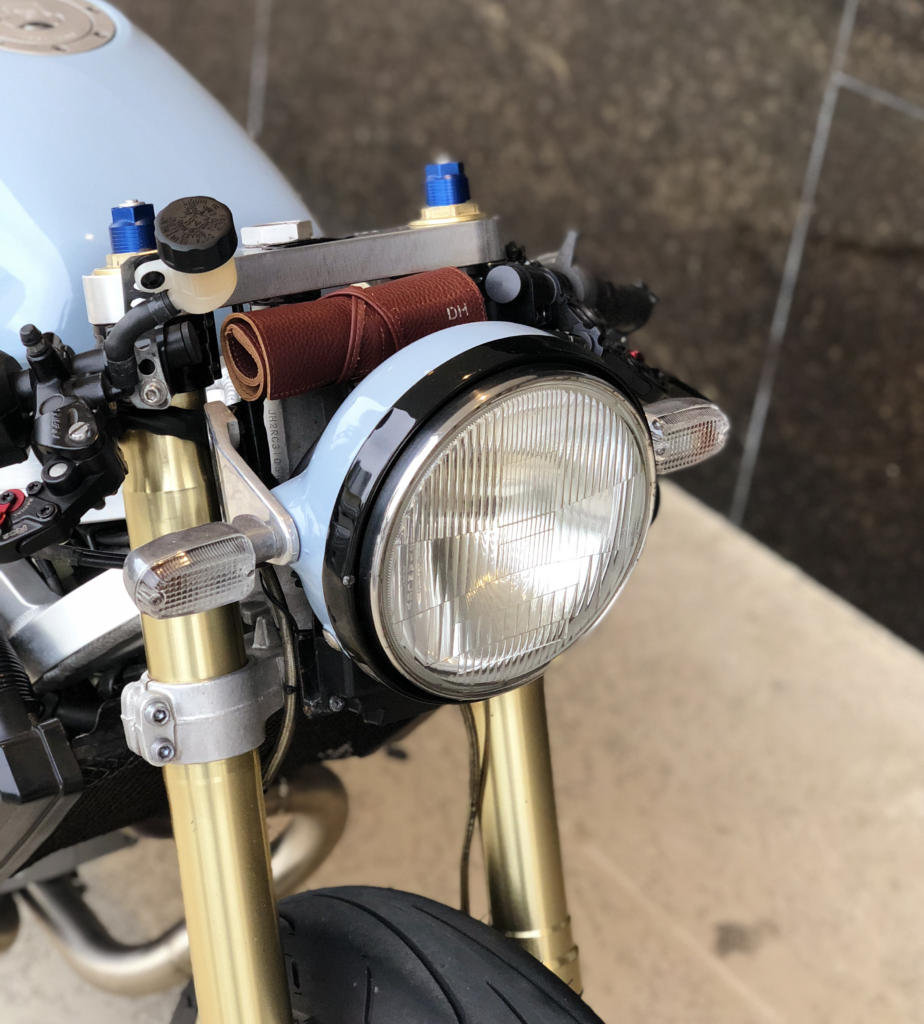
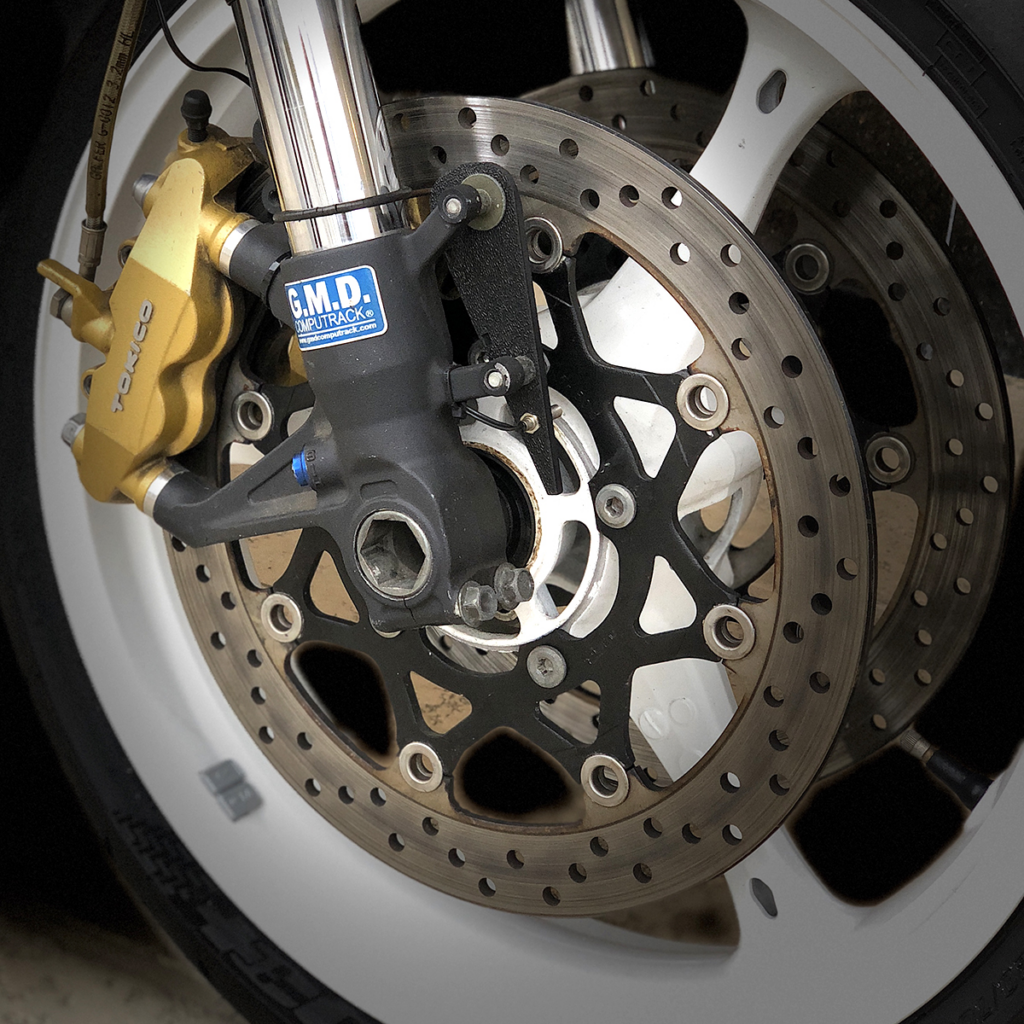
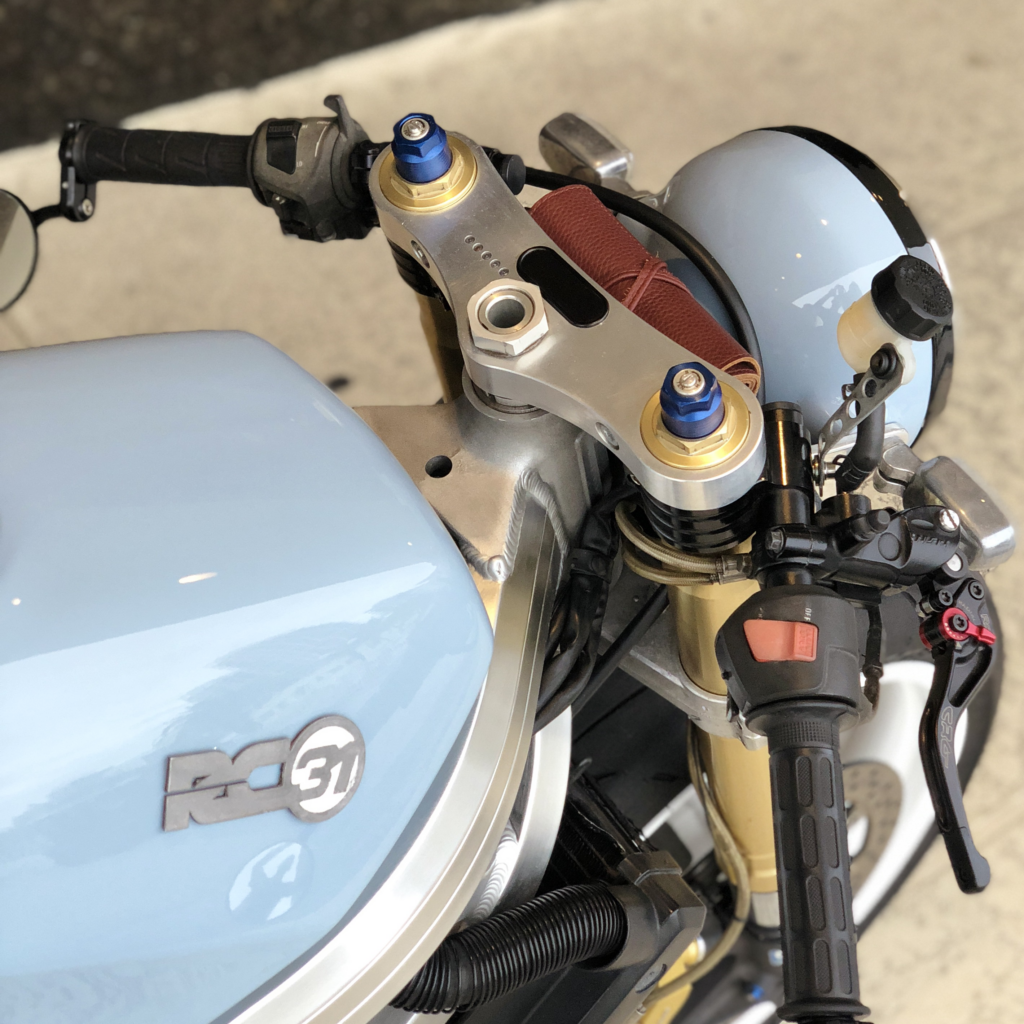
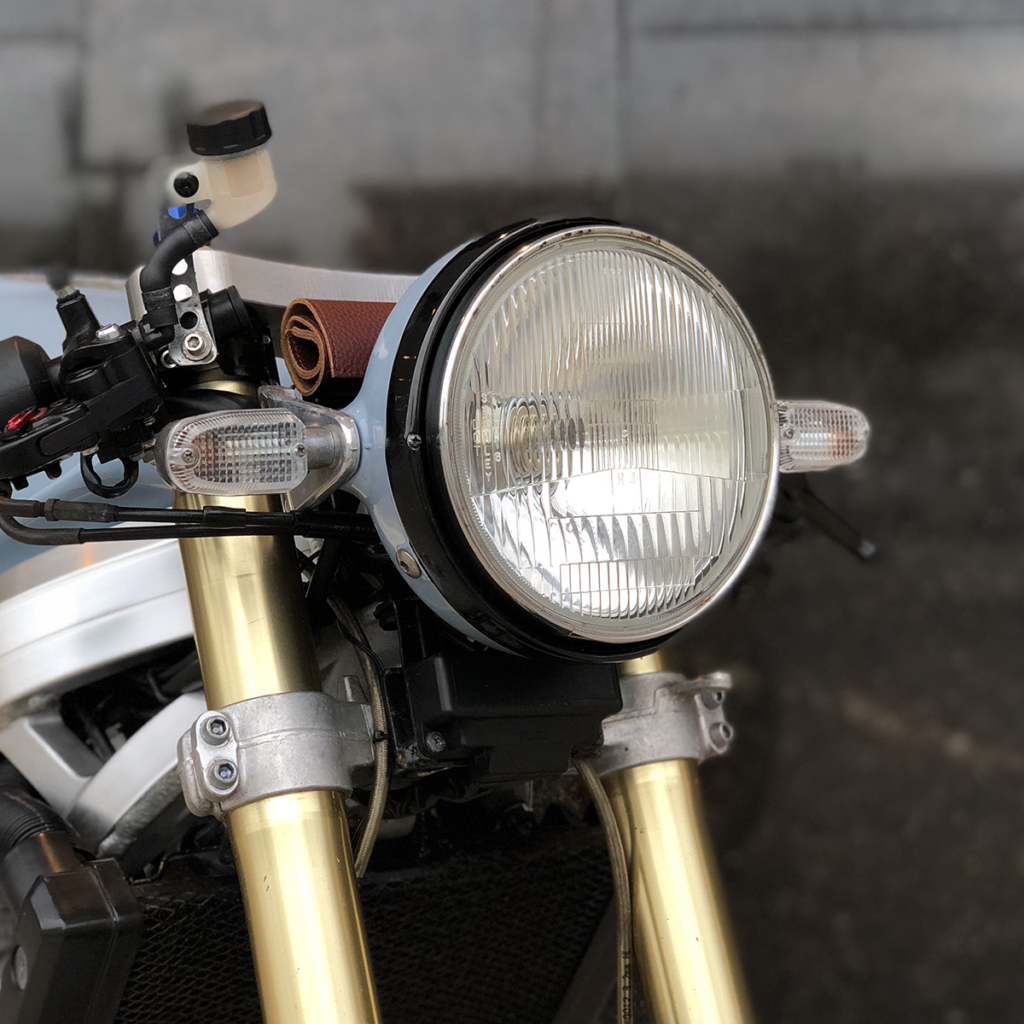
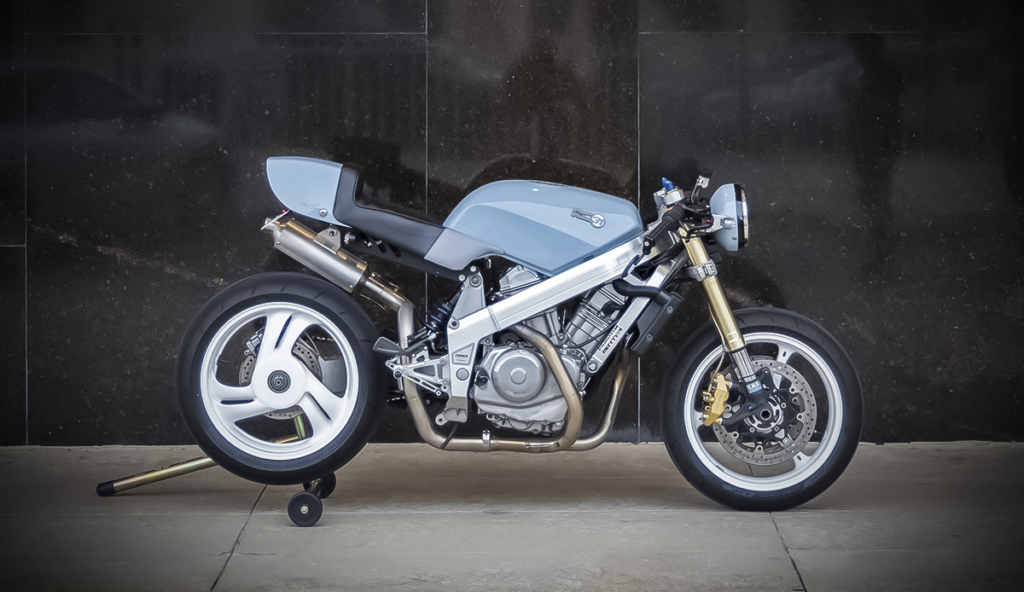
The bottom triple was sourced from a 2003 GSXR 1000, utilizing a conversion kit for the steering head ball bearings. The top triple is a custom billet aluminum piece from Cognitomoto, featuring a built-in Motogadget mini instrument panel.
Front forks consist of GMD race units paired with a 2003 Suzuki tri-spoke wheel, maintaining the original Honda design aesthetic of the single-sided rear wheel. Retaining the Tokico brakes from the Suzuki effectively doubles the stopping power compared to the original single rotor setup. Steel braided brake lines are installed both front and back. Woodcraft clip-on bars are equipped with CRG aluminum mini levers and bar end mini mirrors.
The rear sets are from TYGA Performance, and the rear master brake cylinder with an integrated reservoir is sourced from a Kawasaki Quad, with the brake line routed through the swingarm. Rear suspension has been upgraded to a Penske Racing Shocks adjustable race unit.
The tail section is a modified 1974 Yamaha TZ250 fiberglass piece crafted by Airtech Streamlining. Custom-made seat pan and foam are covered by upholstery sourced from a local upholsterer. The entire build is finished in a light blue with a gloss varnish, while the wheels are powder-coated white.
I designing the tank badges and had them 3d printed in aluminum. Some of my favorite parts, are the stainless steel turn signals. They might be period mods.
The original Hawk GT for the most part, was a sales flop in the United States. The fact that it has turned into a wildly popular cult bike, shows that the design was ahead of its time.
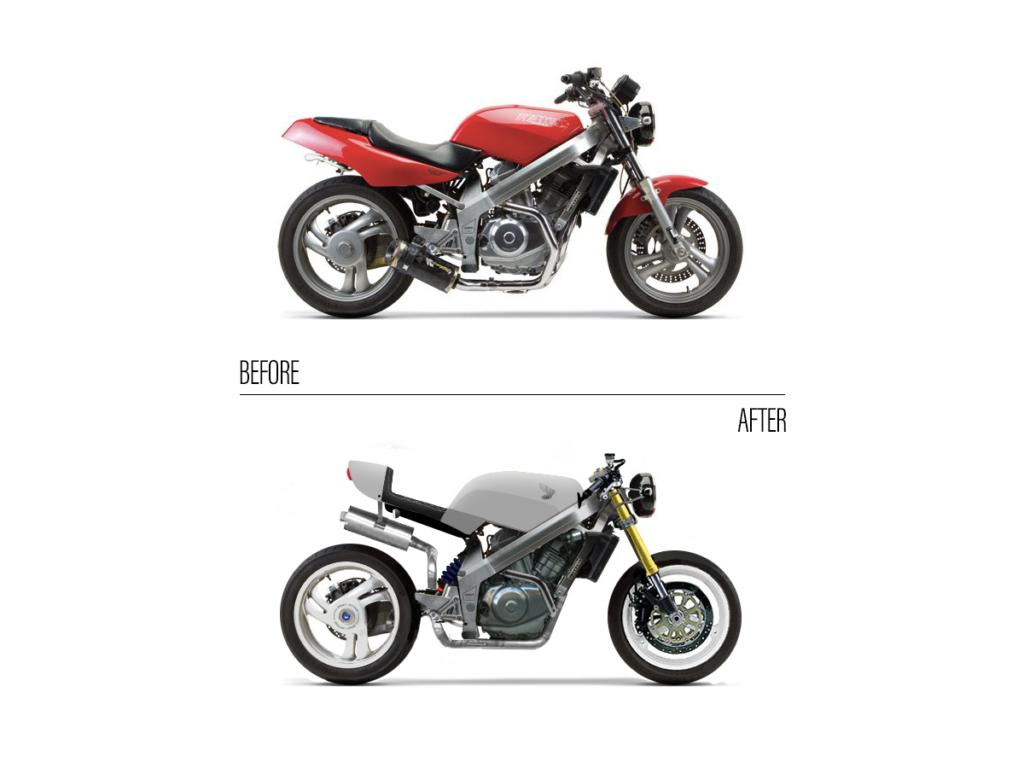
Special thanks to Walter Ferreyra for the heavy lifting and David @demachina for photos… and if you’ve read this far. I chat gpt’d the shit out of this.
